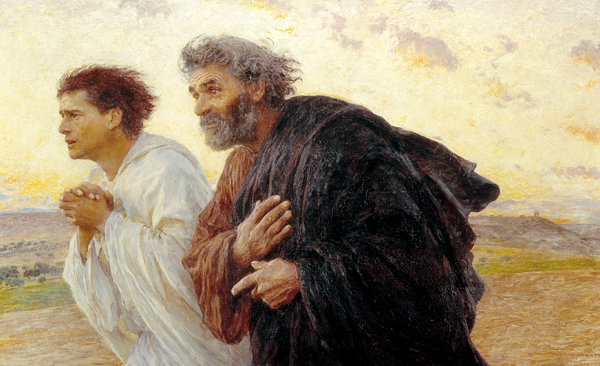
The apostles Peter (right) and John, just awakened by an excited Mary Magdalene, hurry to see whether she is telling them the truth—that the stone sealing Jesus’ tomb has been rolled aside and that the tomb lies empty. In this 1898 painting by the Swiss artist Eugene Burnand, the apostles’ faces betray a mixture of emotions: doubt (for how could the tomb be empty?), grief (for their crucified master and friend), as well as eager anticipation.
Only the Gospel of John records this early morning run to the tomb. Artist Burnand captures the crisp chill of the air: Peter clasps his cloak around himself and his younger companion (John, identified only as “the disciple whom Jesus loved” in John 20:2) rubs his hands for warmth.
Though it is not a race, John in his haste is already pulling ahead. John’s gospel records that “they both ran, but the other disciple [John] outran Peter” (John 20:4). Fleeter of foot, John arrived first at the tomb, but he did not enter. Instead he paused at the door, while Peter went in: “He [Peter] saw the linen cloths lying there, and the cloth which had been on his head … Then the other disciple, who reached the tomb first, also went in, and he saw and believed” (John 20:6–8).
By leaving the tomb out of his painting, Burnand best illustrates what they found: a disappearance, an absence. But this absence is enough to make believers of them.
Already a library member? Log in here.
Institution user? Log in with your IP address.

